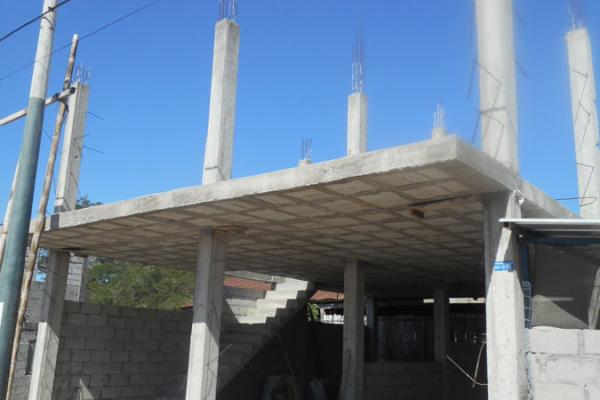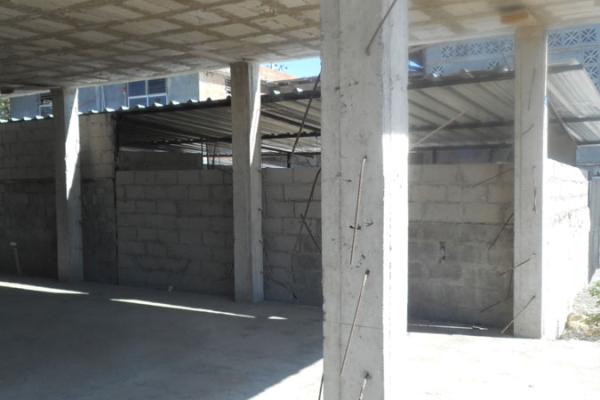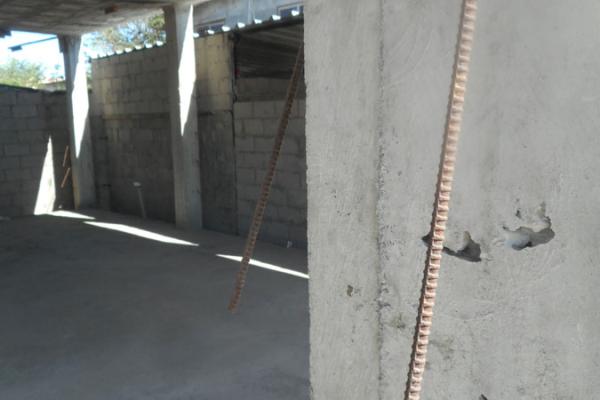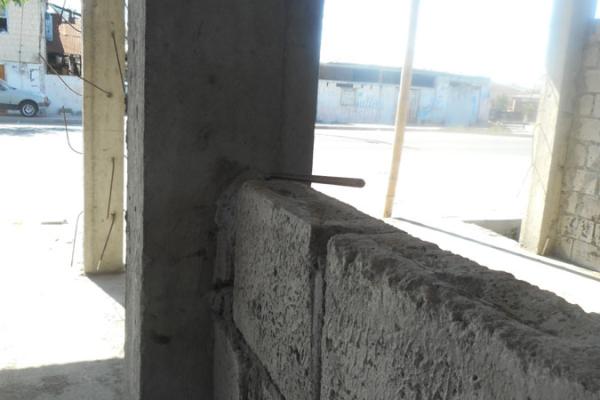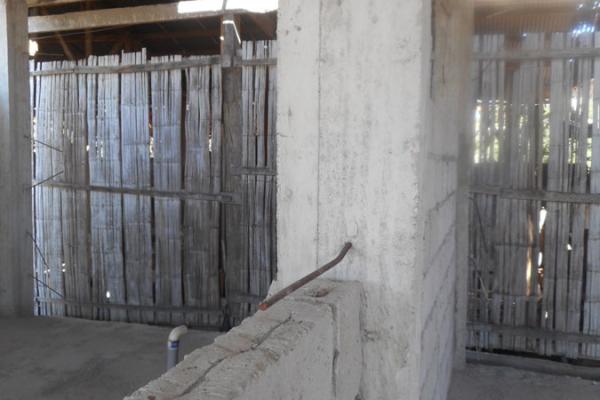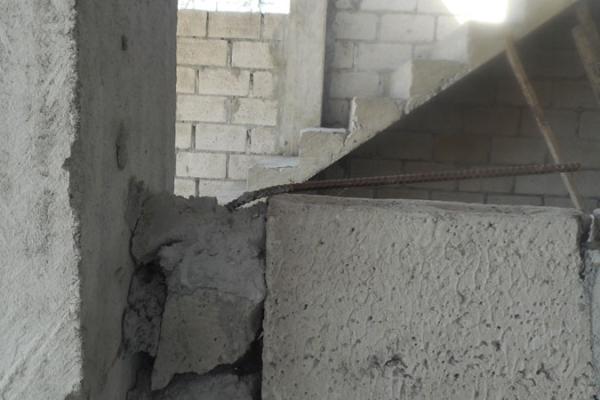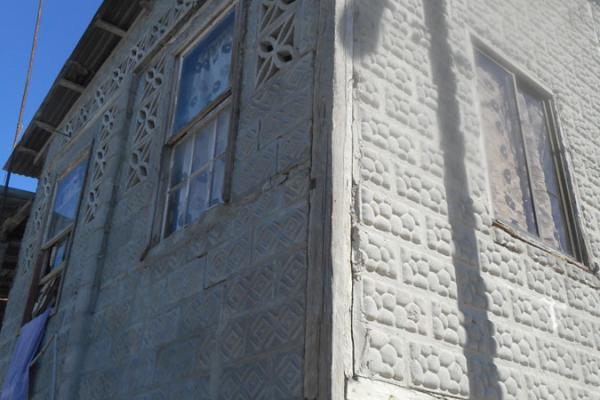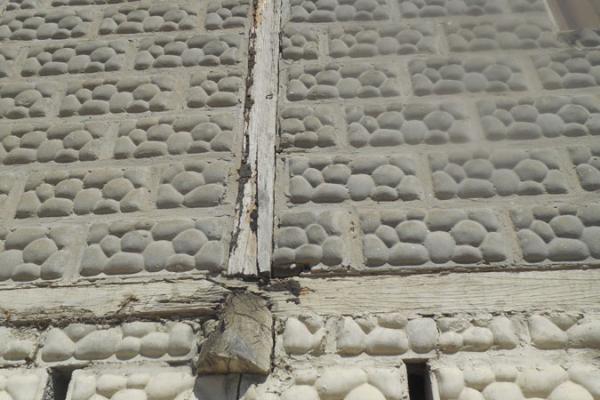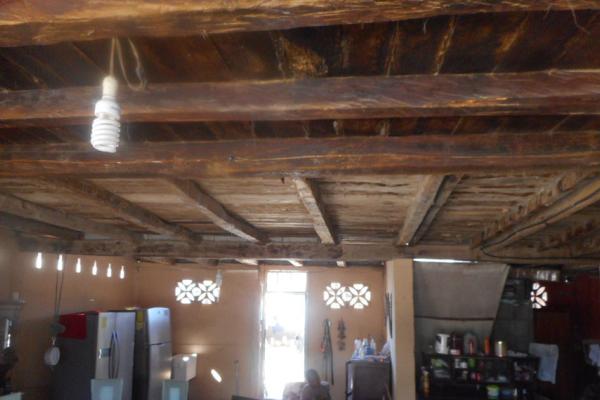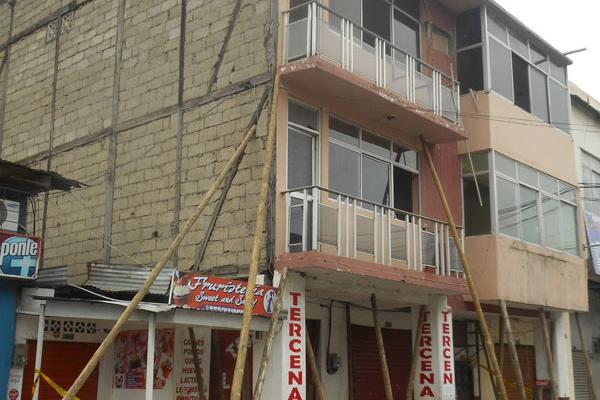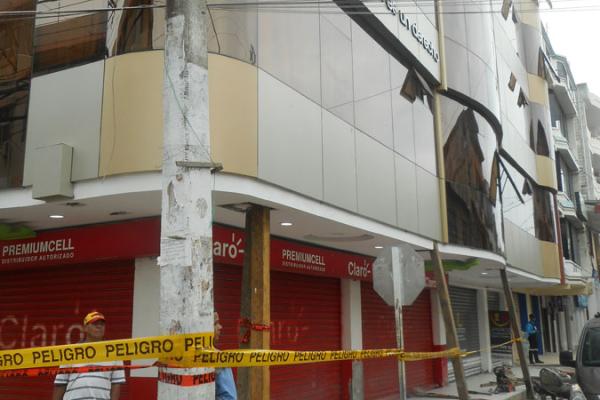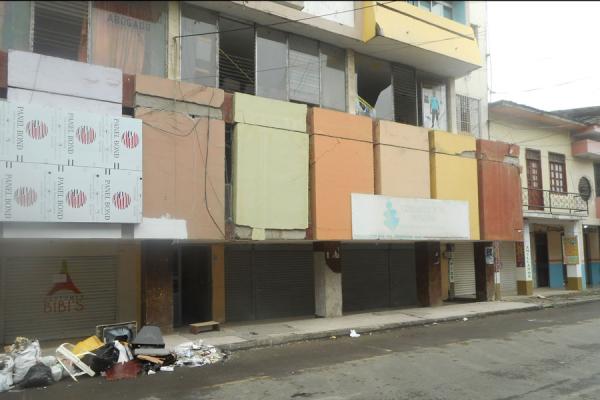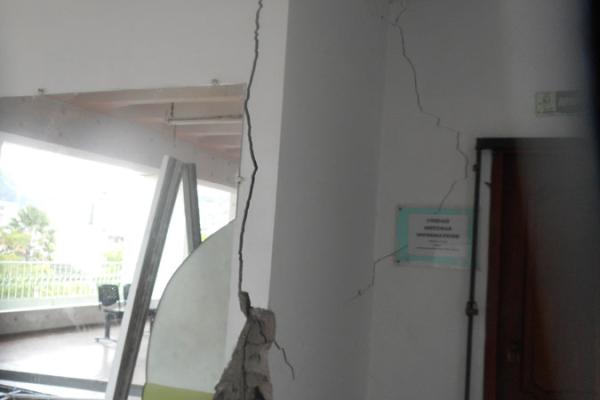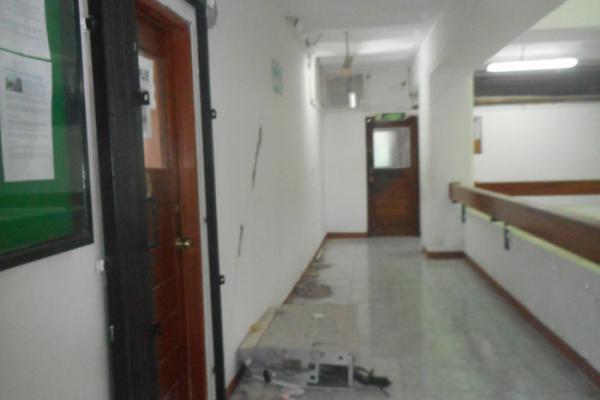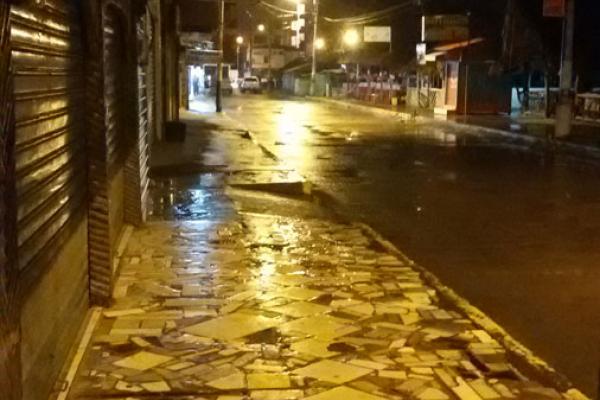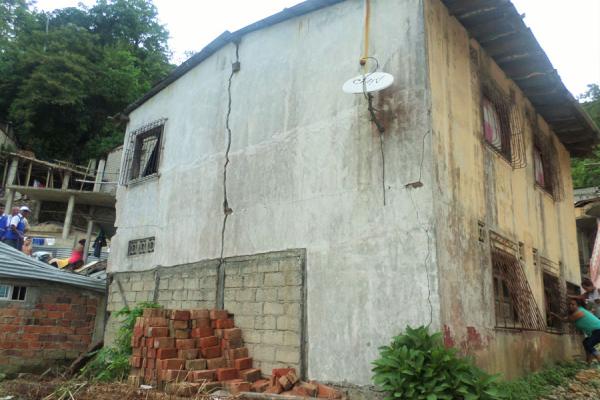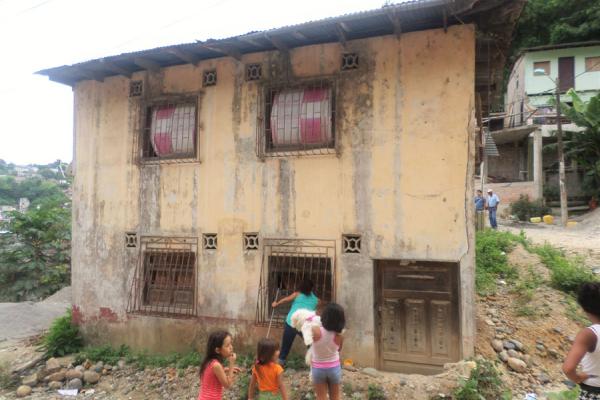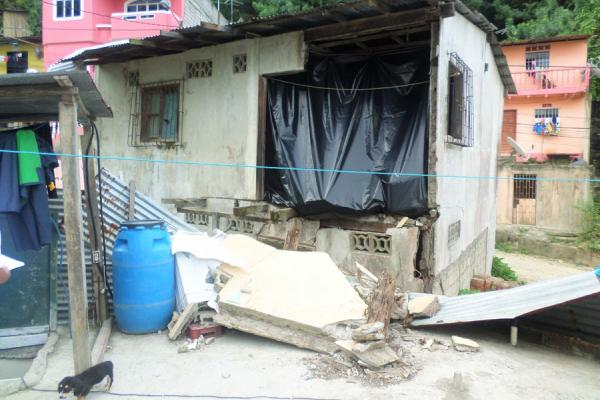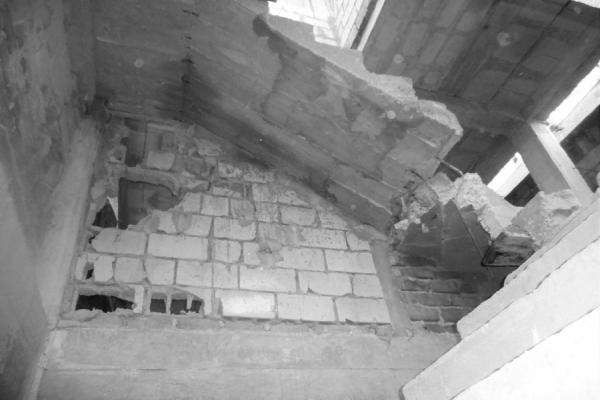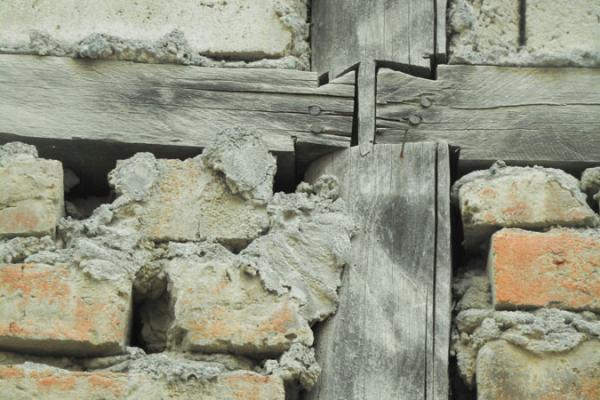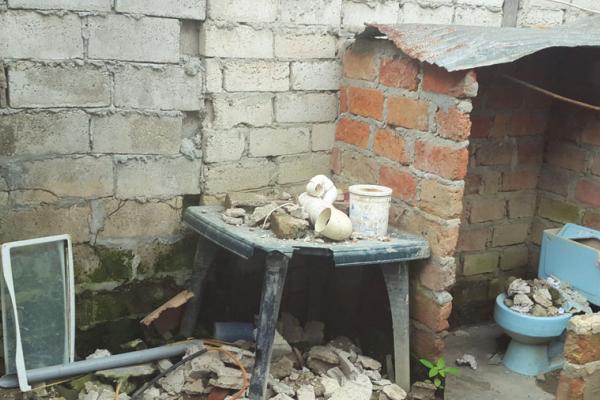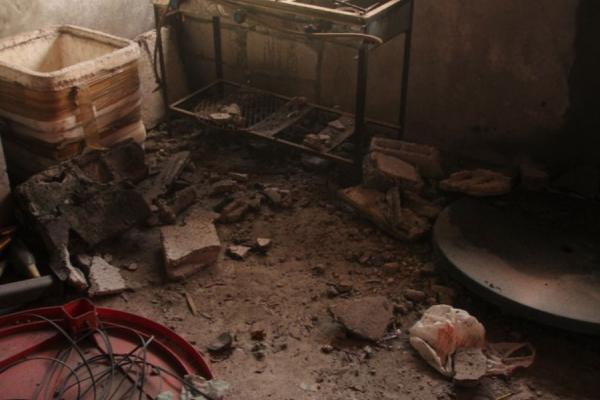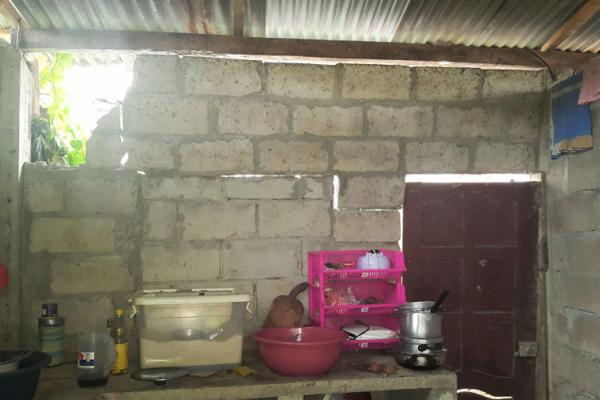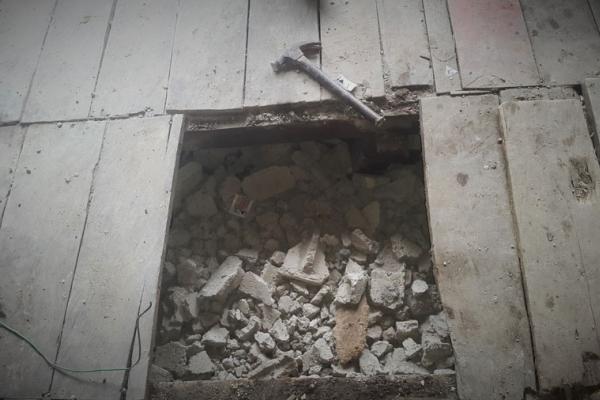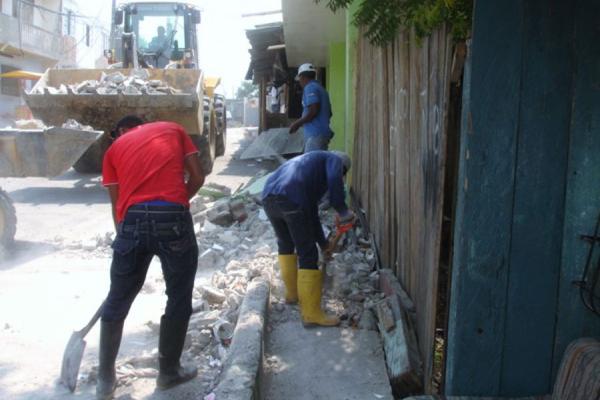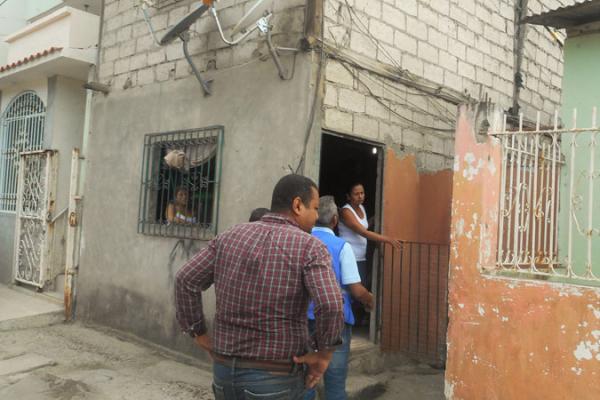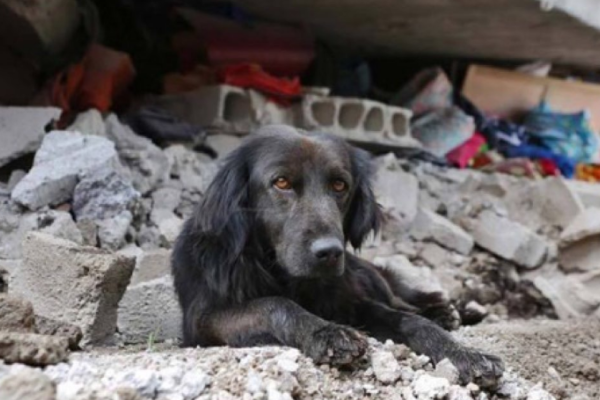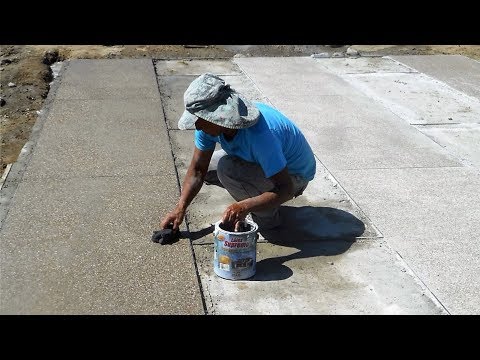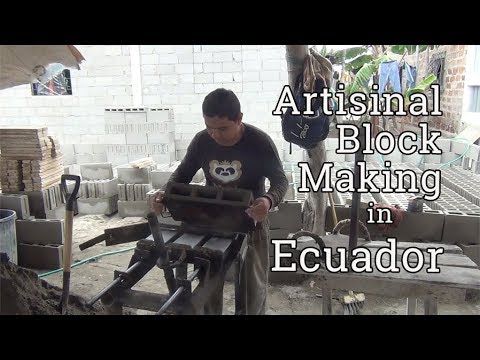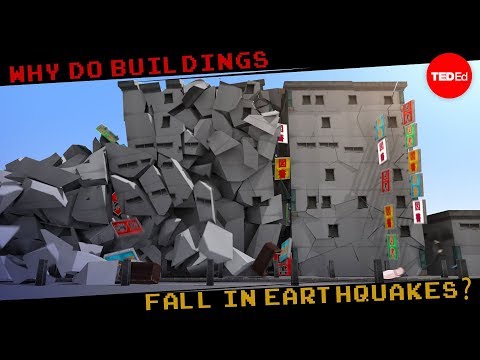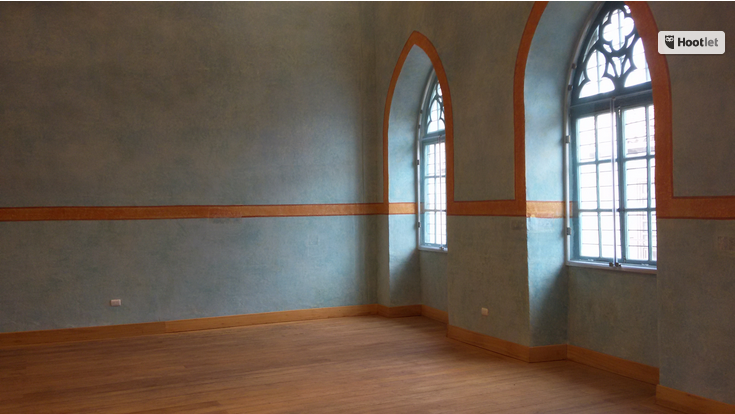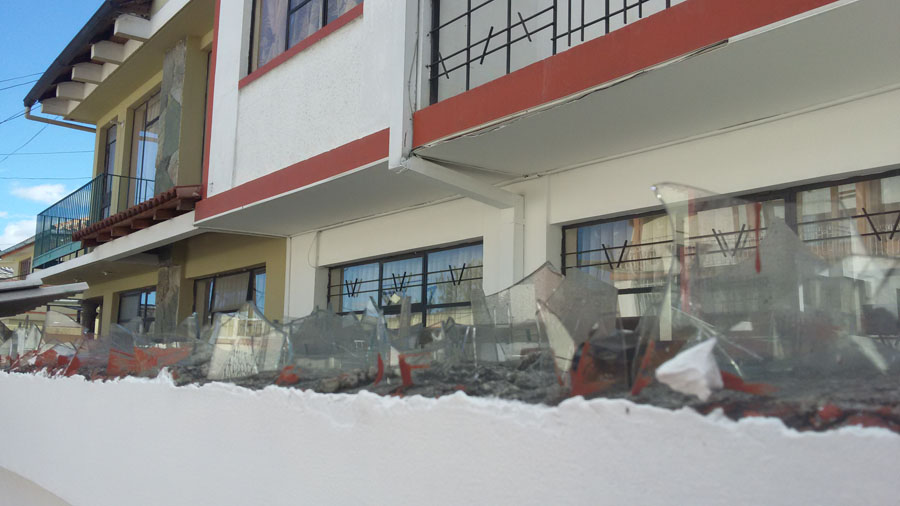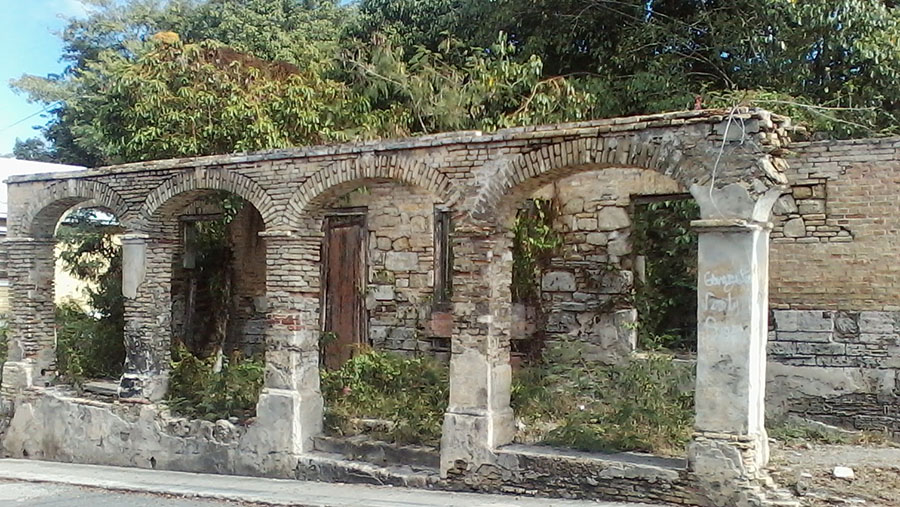News from the ground
Editor's note:Fernando Pagés Ruiz, our Latin America Editor—and friend—has been reporting from Ecuador, Mexico, Peru, and Columbia over the last 9 or 10 months.He and Martina, his wife, were in Ecuador during April's earthquake and thankfully, escaped harm. We'd like to share Fernando's updates with his audience, so we'll publish his emails chronologically, most recent at the top.
5/19/16
Dan,
This may be fun to add, from the local gringo news….
“In Guayaquil and Quito, the 11:46 a.m. quake sent thousands of workers into the streets, fearful of building collapses. President Rafael Correa suspended school classes and ordered police and army personnel to the affected area. The Interior Ministry invoked a “no fun” rule, ordering the country’s bars, discos and night clubs closed until Monday, May 23.”
:(
Fernando
5/19/16
From this morning’s news: “In Esmeraldas, dozens of buildings not affected by the April quake were damaged, many being reported as irreparable.”
5/18/16
Dear Dan,
Memories run short, and already folks have begun to relax with the belief that another “big one” won’t come for another 75 years or so. So maybe it was good that today we got hit with two more pretty big shakers. Unfortunately, a bank collapsed in Puerto Viejo killing four, and several folks in various places sustained light to moderate injuries.
ECUADOR SHAKING IT UP, TWO 6.8 EARTHQUAKES SO FAR TODAY 05-18-16
Posted on May 18, 2016 • Filed under: Ecuador, Ecuador Emergency
6.8 earthquake near Mompiche
In the aftermath of April’s devastating earthquake and over a thousand aftershocks, Ecuador has been hit today with two 6.8 quakes in the northwestern section of the country near the coast (Mompiche) No reports yet of damage and or injuries. Various reports indicate both quakes have been between 6.7 and 6.8.
The quake struck 82 km (50 miles) south of Esmeraldas on the northwestern coast of the Andean country, the city where I’m working.
The mayor has approved my project of developing a systematic inspection and reconstruction ordinance, and the engineering department of the University of Arkansas at Little Rock will assist, along with local structural engineers.
Today was just another timely reminder that when you live on a fault line, you need to be prepared for those seismic seizures and build to save lives, even more than build to save a little money.
5/4/16
Hinge effect of post/slab construction with no lateral reinforcement
The house you’re looking at fell without an aftershock, it was damaged and eventually fell due to weakened construction.
In the pics attached, you can see how the standard construction techniques using 3/8-in rebar, and block meant for non structural lamination of walls. There is no horizontal rebar, no bars pinning the wall to the floor or ceilings.
Nothing keeps a house from collapsing in even a minor quake.
This has to change in an area of the world were we once experienced the biggest earthquake in recorded history, on May 22, 1960 near Valdivia, in southern Chile. It was assigned a magnitude of 9.5 by the United States Geological Survey.

Basic construction consists of a forest of columns with a concrete slap over the top. A couple rods of 3/8 in. rebar connect columns to floors. You can see the hinge effect at work in the video of the house falling.

3/8 in. rebar at 40 cm (almost 16 in.) on center. No horizontal rebar beyond the pins. The thin-block is not meant for building walls, but rather lining them. They are not structural.
This is known as “mixed” construction, combining lightweight, wood structural elements and heavy masonry. The process happens over the years as the family saves money and makes “improvements” on the humble, original wood house.

The custom is to add lots of decoration, making the masonry walls, already too heavy for the structure, even heavier.
The wood frame ceiling you see holds up a slab, poured over the original wood sheathing, and two more stories of slab and masonry construction. It will collapse in a quake, potentially killing everyone you see in the photo.

5/1/16
Dan, good afternoon! I thought you’d be interested in how the earthquake has affected the legal doctrine of Ecuador.
First, there are different legal systems throughout the world, two of which are English Common Law – on which our legal system in the USA was based -- and the Spanish legal system rooted in Roman law.
One striking difference between the English and Spanish systems, is that while testimony and oral arguments are fundamental under Common Law, the countries of South America, which inherited the Spanish model, rely almost entirely on documentation—no oral argument at all. This makes for a very cumbersome, bureaucratic process that takes years to resolve even simple controversies, if only because judges must read hundreds and sometimes thousands of pages of documents.
So, to make things more efficient and provide speedy justice to its citizens, the government of Ecuador was in the process of reforming is system based on the US legal system, a welcome change that was to take full effect on 22 May 2016—this month.
But having no courtrooms to hear arguments in, one of the big items in preparation for this change, was the construction of adequate courtrooms in which to hear testimony. Many of these newly constructed facilities were demolished or severely damaged by the earthquake. Having no place to hear testimony and make oral arguments, the president of Ecuador, Rafael Correa, was forced to postpone the adoption of the new legal system for six months or more.
With contractors and architects now accused of criminal negligence in constructing substandard structures that maimed and killed during the earthquake of 16 April 2016, the suits will be field under the old system and the courts will continue to be bogged down with tomes and tomes of legal briefs for decades. Good news for the negligent builders, bad news for those hoping for speedy justice.
As matter of record, I am firmly in the camp of those who believe that contractors have a duty to build well.
4/26/16
Dan,
I thought I knew how to help. After all, I had worked in the Los Angeles earthquake retrofit industry for ten years. I am an insurance adjuster adjuster. I have worked major earthquakes and storms, as contractor, designer and insurance estimator.
But today I got my first close look. I went on an inspection tour of Esmeraldas with municipal technicians.
It works like this, citizens show up at city hall, they ask for an earthquake damage inspection, and then at three pm the next afternoon, a bus pulls up to city hall, the citizens that want an inspection file in, along with an architect.
The bus goes from house to house, and at each stop the architect takes a quick look and makes a few, off-the-cuff repair recommendations, "Tear all the walls down and replace them, otherwise your house is fine."
Sometimes he issues a demolition order.
One architect, thousands of buildings.
My job is to adopt FEMA earthquake inspection and repair manuals into a prescriptive tool that untrained city staff can use to augment the inspection capacity. I felt totally up to the task, until today. When you go into a house built so poorly that you would recommend demolition even before the earthquake damage it, how do you recommend repair?

And if you recommend replacing a damaged wall, what about all the others that will surely fall if there's more seismic activity? There certainly will be another earthquake.

Many homes are 3x3 lumber posts and beams, with walls of hollow block on top, masonry without steel, and no ties to structural members. Beams are joined over posts with butt joints and maybe a nail, or rough-cut dovetail joints that look craftsmanly, but only further weaken the ridiculously undersized structural members.

Many homes start as one or two story structures, but families add on, and add on, four or five floors sometimes.
The masonry work is horrible, but ceramic tile work is superb. Rough carpentry is about as rough as shipping crates. But the doors and door frames fit like fine cabinetry.

It's a disaster, and that's before the earthquake.
But my job is not to disparage local trade practice, or to say it's hopeless. My job is to develop a systematic method of inspection with standardized repair recommendations that homeowners can apply and afford. I can't throw up my hands and say, this is ridiculous! At least not yet.
I will have to scratch my head hairless and come up with a serious set of proposals. Repairs that work with available materials and construction skills, and will provide the tangible benefits, not only to bring homes back to the way they were before the earthquake, but homes made safer for the next big one.
(more photos below)
7:58 am CST
Dan,
The price of cutting corners, finally, it’s in the local news:
Correa says contractors should be punished for ‘shoddy construction’ in quake zone
President Rafael Correa announced Monday that he has asked the attorney general to identify contractors of buildings that collapsed or were severely damaged during the April 16 earthquake.

Collapsed buildings near Manta.
“Hundreds of lives have been lost because of shoddy construction. It is time for the builders to face the responsibility for what they did. They will be prosecuted,” Correa wrote on his Twitter account.
Correa said that new, more stringent construction standards will be established before reconstruction begins in the earthquake-ravaged area, but said many of the buildings destroyed during the recent earthquake were not built to existing specifications. “They cut corners to save a few pennies and their actions cost the lives of many people,” he said.
4/25/16
I spent about four hours with the mayor, Lenin Lara Rivadeneira, his architect father-in-law, and structural engineer brother-in-law.
We talked a lot, first socially, football, Argentine soap opera, wine, and the beers of Belgium. Then I – about two hours later – I gave the presentation I traveled to deliver.
The mayor asked me to give the same presentation to his team tomorrow morning. He likes what I suggested, to get off the ground running adopting FEMA forms and methods for a preliminary building survey, and then combine FEMA repair recommendations and IEBC Chap. 5 retrofit details to develop prescriptive fixes that the local construction masters” can implement.
Later, to engage a US engineering college and organize an international symposium of earthquake experts to kick-off the development of an earthquake retrofit code for Esmeralda.
The mayor also need to build some 15.000 affordable housing units for replacement of entire neighborhoods built on sandy soil subject to liquefaction.
These are the neighborhoods where 90-percent of the buildings collapsed. I would jump at the chance to build 15,000 affordable units—in the USA, where “affordable” can be $150,000, and that’s cheap.
In Mexico, when I addressed their version of HUD, I felt silly presenting my methods to shave $10,000 off a $100,000 house, when their none-subsidized starter homes cost $10,000 turnkey.
Here in Ecuador, there’s a Christian group that builds and sells stilted bamboo esterilia homes for $500 (that’s not a typo), and they can put one up in two days. Esterilla refers to the cane matting that makes the exterior envelope.
The mayor hopes to avoid this—the NIMBY phenomenon is universal—as, “it screams poverty.” I may help him design some simple, masonry or wood homes that say something else, something along the lines of “this is a nice place to live.”
I didn’t mention to the mayor that, prior to his invitation, I had planned to spend the weekend at an orientation meeting with Hogar de Cristo learning how to build these cane homes, so I could spend a few weeks putting them up as a volunteer.
I’d kind of still like to do this—sounds like fun, and certainly the pinnacle (or pier) in the life of a guy who’s spent his career building “affordable” housing -- $500 bucks and two days for a family of four, now that’s affordable.
Israeli humanitarian charity sets up field hospital in quake-torn Ecuador
Jerusalem Post Israel News | Ecuador The Times of Israel
04/23/16
10:02 CST
Atacamas, a tourist meca usualy as busy as montañita, empty on Saturday evening. The loss of dollars another casualty, even where the damage was minor.
9:26 CST
 In my hotel there’s a contingency of NYC firefighter-paramedics. They were first responders during 911 and all have an interesting life story to tell.
In my hotel there’s a contingency of NYC firefighter-paramedics. They were first responders during 911 and all have an interesting life story to tell.
They leave at 3:30 AM to remove victims form the ruble, save the occasional mom or daughter buried several days but clinging to life, they inspect buildings, distribute aid, and even deliver babies. at 9:30 pm they are at the hotel bar drinking beer. Great folk.
4:40 CST:
Here’s the latest figures:
The death toll from last week’s earthquake in Ecuador has risen to 646, the president, Rafael Correa, has said.
The 7.8 magnitude quake, Ecuador’s worst in nearly seven decades, injured about 12,500 people and left 130 missing along the country’s ravaged Pacific coast.
'This city will never be what it was': Ecuadorians count cost after earthquake
“These have been sad days for the homeland,” said a visibly moved Correa during his regular Saturday TV broadcast. “The country is in crisis.”
There have been several strong tremors and more than 700 aftershocks since the quake, causing panic but little additional damage. Tremors are expected to continue for several weeks.
With nearly 7,000 buildings destroyed, more than 26,000 people are living in shelters. About 14,000 security personnel are keeping order in the affected areas, where only sporadic looting has been reported.
Survivors in the quake zone have been receiving food, water and medicine from the government and scores of foreign aid workers, but Correa has acknowledged that the poor condition of roads delayed the arrival of aid to some communities.
The hotel I am staying in is full of paramedics from the USA.
3:00 CST:
I arrived a few hours ago, and went to the municipal building in Esmeraldas, the capital provincial city.
The damage here has been limited to cosmetic and structural cracks, broken glass and only a few homes collapsed. Tomorrow I will go to Muisne, where the damage is much greater.
Here I met with the city engineer and the director of foreign aid coordination.
I had once done work with the Peter Kiewit Institute to help design prescriptive house plans for Katrina. This was in the days I’d written “the” book on affordable housing. I’m hoping to do something similar, getting this institute, or another engineering college to participate.
In the USA, because all the towns and cities have jurisdiction over construction, we have developed the “model code” concept, which is useful in situations when you need a ready-made building ordinance, as Ecuador needs badly. FEMA even provides guides on how to establish an earthquake readiness program.
I suspect all of these will provide great benefit in Ecuador.
The pictures that accompany this email show the common damage in areas not totally ravaged.
They may not look dramatic, but come with considerable economic cost—especially where insurance is not required and most people cannot afford it. The crime would be painting over the damages on the cheap, which could result in much more severe damage and even injury in the future.
Ecuador is on the Nazca Plate, slowly sinking beneath the South American plate, responsible for the strongest earthquakes ever recorded, and the origin of the great wrinkle on the earth’s crust known as the Andes mountain chain.
04/21/16
Dan, when you think about Ecuador, the death toll this morning over 500, with 1,700 missing, and well over 3,000 injured, you may wonder why in the United States, in Japan, and Chile, only a few dozen die. It was not always this way.
During the 1906 San Francisco earthquake 3,000 people died and nearly quarter of a million were left homeless. Ten years later, earthquake construction codes were adopted, and enforced.
By the time the San Fernando earthquake struck southern California in 1971, most newer buildings were built to seismic standards and the mortality rate was limited to 64 people. This quake was about the same size as the one that struck Esmeraldas, in Ecuador last week.
Coincidentally, the authorities and construction industry groups began discussing the adaptation of a building code only last year. I expect this major event, and the loss of life, will hasten that discussion.
In fact, given my experience working in the seismic retrofit business for ten years in Los Angeles, I have been invited to the city of Esmeraldas to help develop reconstruction standards, a volunteer job I will do with great satisfaction.
I'll be joining a group building 15.000 cane emergency homes for the displaced. This will make a nice story. Tomorrow, the radio interviews me on the earthquake and why so many died and so many buildings fell. I will talk about our own experience with disasters in the USA that triggered the well organized and enforced building regulations that have made our cities safer.
I expect the same to happen here.
Article:
U.S. has boots on the ground in the earthquake zone; Ambassador asks for help finding missing U.S. citizens
U.S. Ambassador to Ecuador Todd Chapman reports that U.S. disaster aid teams arrived Monday to help with earthquake relief and recovery work. The ambassador praised the efforts of expats for helping in the aftermath of the earthquake and asked for assistance locating missing U.S. citizens.
To read the article, click here.
04/18-21/16
Official dead: 350 (and growing)
Foreigners: 2
Official injured: 2500
But this is not the last count. Morning paper: “Officials say that foreigners are among the dead, although so far only two Canadians have been identified. Throughout the affected areas, dozens of tourist hotels have been flattened with hundreds reportedly inside.”
“Bridges have been destroyed. Some villages can only be reached by off-road vehicles or by foot.”
“On Sunday morning, Vice President Jorge Glas offered a broad view of the work ahead. ‘It is massive, it’s heartbreaking, and it will be very difficult. This is work that will be with us for many months, probably for many years.’”
The folks here are quite shook-up. It’s not like us in the states, inured. It feels a lot like the days after 9/11.

